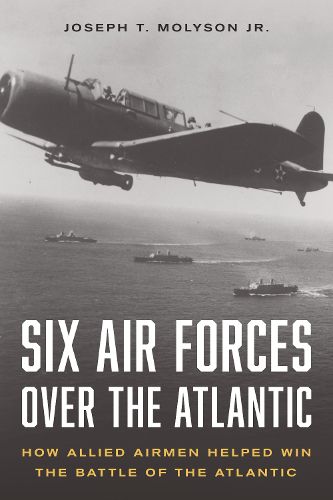Readings Newsletter
Become a Readings Member to make your shopping experience even easier.
Sign in or sign up for free!
You’re not far away from qualifying for FREE standard shipping within Australia
You’ve qualified for FREE standard shipping within Australia
The cart is loading…






The Battle of the Atlantic was the longest campaign of World War II, lasting the entirety of the war in Europe from September 1939 to May 1945. It was also one of the war's most complex campaigns, involving strategy, operations, tactics, logistics, politics, diplomacy, and alliances. During the war's first two years, the United States was drawn deeper into partnership with Great Britain, and closer toward conflict with Germany, in the waters of the North Atlantic. Franklin Roosevelt realized this theater's importance: "I believe the outcome of this struggle is going to be decided in the Atlantic." And so American, British, and Canadian forces battled Germans at sea and in the air to protect the flow of first materiel and then men from the United States to the United Kingdom. The sea part has been well covered: how German U-boats and other warships hunted Allied convoys and how the Allies ultimately turned the tide. Not so much the air war.
In Six Air Forces over the Atlantic, Joseph Molyson tells the story of the Battle of the Atlantic from the perspective of the air forces-and airmen-who waged it from the skies above the icy waters of the North Atlantic. He blends big-picture attention to strategy and tactics with dramatic episodes of air-to-air and air-to-sea combat, including the engagement in which a British light bomber captured a German U-boat near Iceland. He details the close eye Franklin Roosevelt kept on the campaign, the effect B-24 Liberator bombers had, and the rise of the Royal Air Force Coastal Command as a true U-boat-busting force. The result was victory in the Atlantic, as well as a significant contribution to victory in World War II.
$9.00 standard shipping within Australia
FREE standard shipping within Australia for orders over $100.00
Express & International shipping calculated at checkout
The Battle of the Atlantic was the longest campaign of World War II, lasting the entirety of the war in Europe from September 1939 to May 1945. It was also one of the war's most complex campaigns, involving strategy, operations, tactics, logistics, politics, diplomacy, and alliances. During the war's first two years, the United States was drawn deeper into partnership with Great Britain, and closer toward conflict with Germany, in the waters of the North Atlantic. Franklin Roosevelt realized this theater's importance: "I believe the outcome of this struggle is going to be decided in the Atlantic." And so American, British, and Canadian forces battled Germans at sea and in the air to protect the flow of first materiel and then men from the United States to the United Kingdom. The sea part has been well covered: how German U-boats and other warships hunted Allied convoys and how the Allies ultimately turned the tide. Not so much the air war.
In Six Air Forces over the Atlantic, Joseph Molyson tells the story of the Battle of the Atlantic from the perspective of the air forces-and airmen-who waged it from the skies above the icy waters of the North Atlantic. He blends big-picture attention to strategy and tactics with dramatic episodes of air-to-air and air-to-sea combat, including the engagement in which a British light bomber captured a German U-boat near Iceland. He details the close eye Franklin Roosevelt kept on the campaign, the effect B-24 Liberator bombers had, and the rise of the Royal Air Force Coastal Command as a true U-boat-busting force. The result was victory in the Atlantic, as well as a significant contribution to victory in World War II.